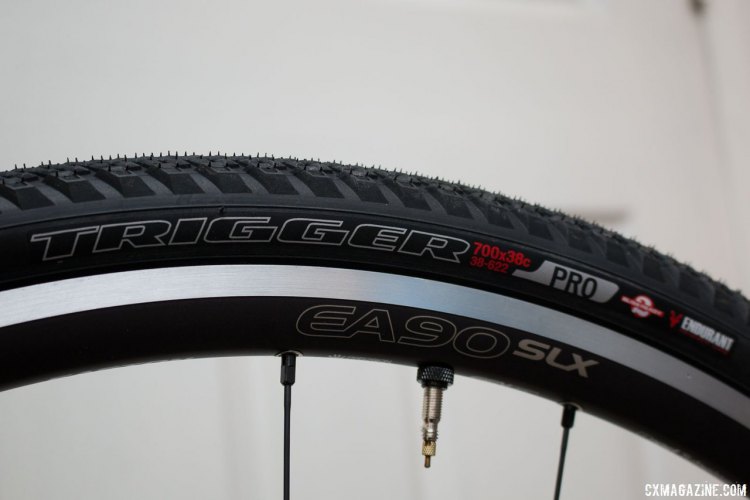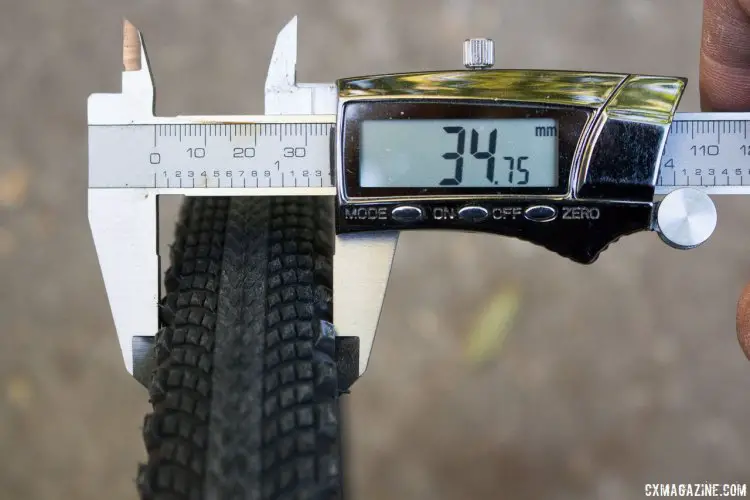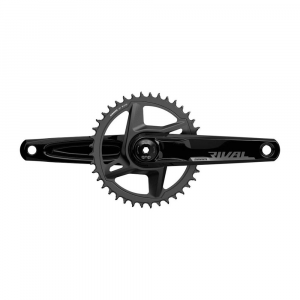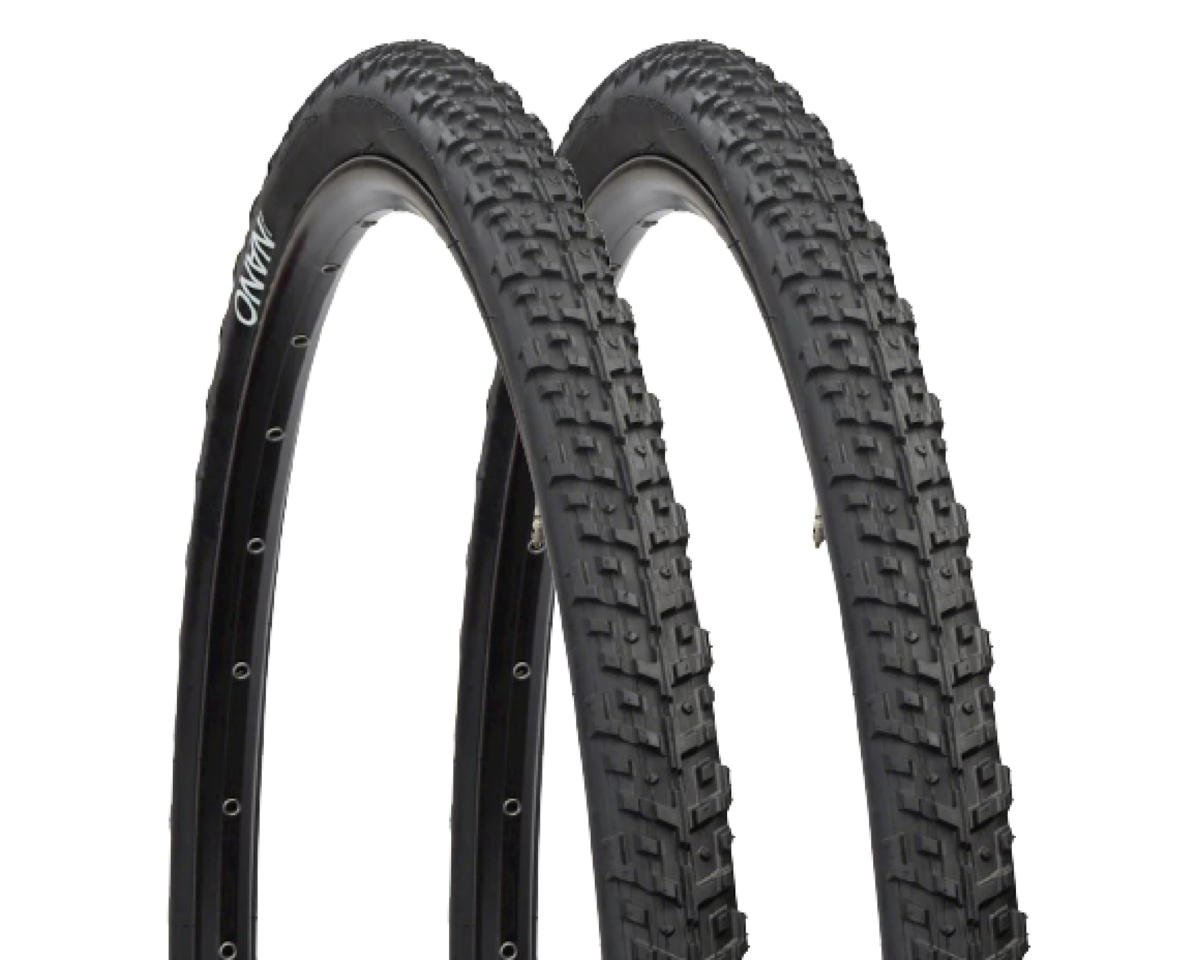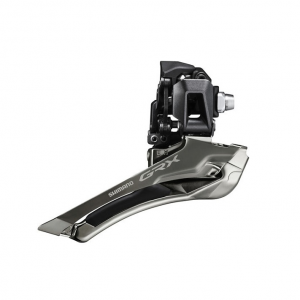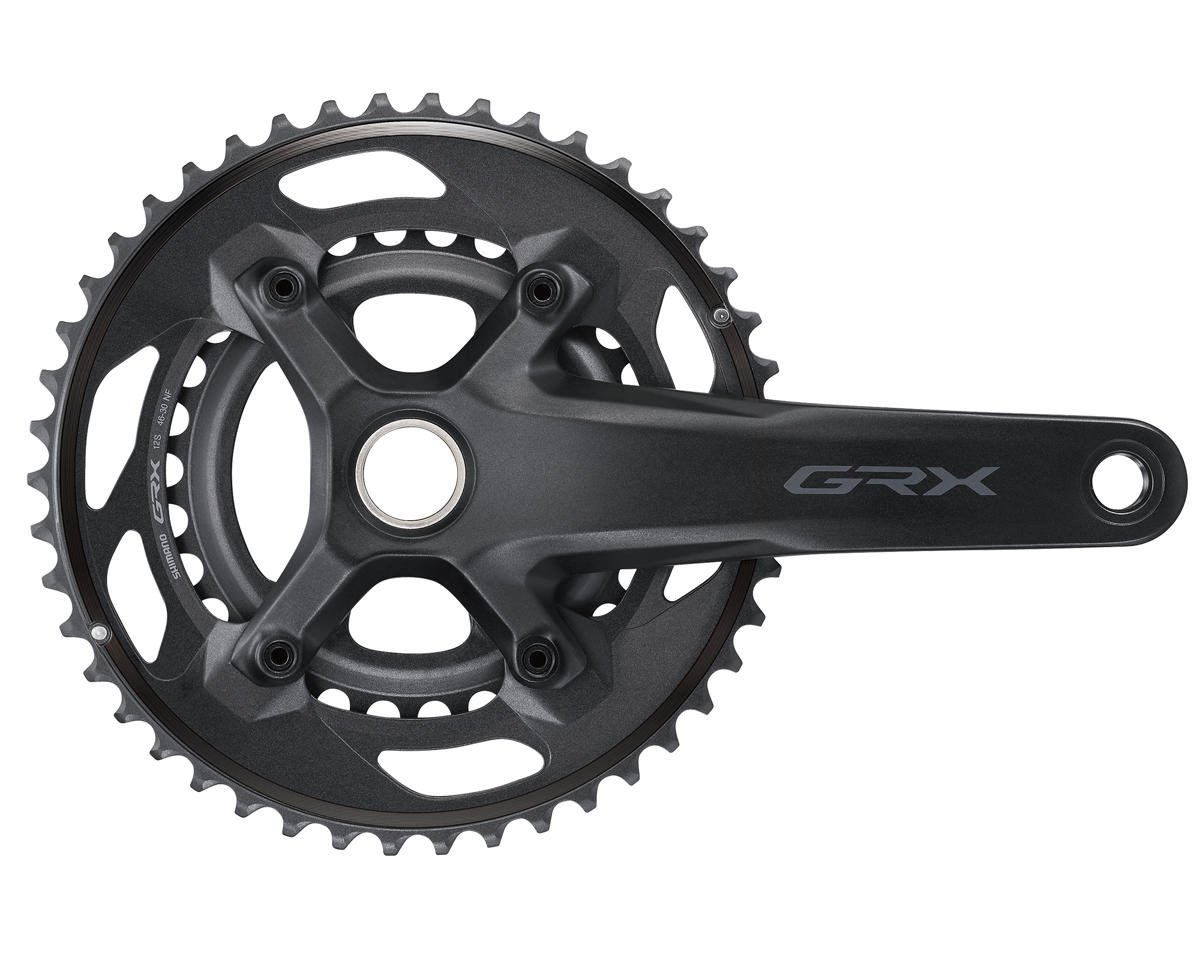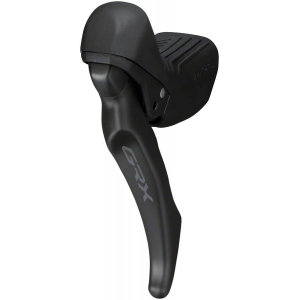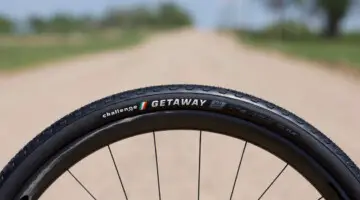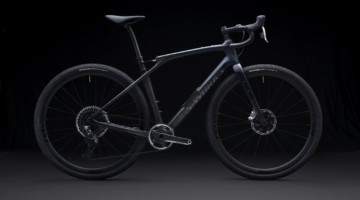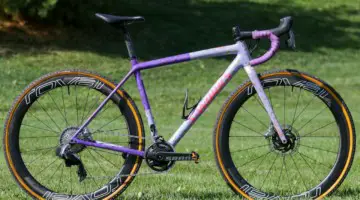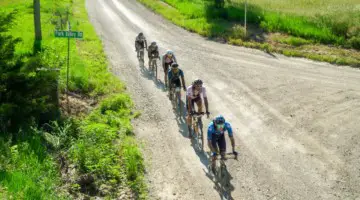Editor's Rating
A good tire with decent volume, the Specialized Tracer Pro 38c is great for bad roads, commuting, and hard packed dirt, but any time the ground is loose, the rider is left spinning, particularly on steep climbs. Not reliable on Road Tubeless rims.
Last year we had a first look at the Specialized Trigger Pro 700x38c 2Bliss Tire during the Lost and Found gravel ride. The tire offers riders a higher volume option for long days on gravel roads, and early prototypes of the Trigger 38c tires helped former Masters Cyclocross National Champion James Alan Coats power through the 100-mile event. After the race, although Coats, like most participants, looked fatigued, the tires still looked ready to go again—which made sense because they were originally developed for Rebecca Rusch’s Dirty Kanza 200 Gravel Race.
Much like the smooth tread Specialized’s All Condition Armadillo Elite that Cody Kaiser was using in his race at Barry-Roubaix last weekend, the Specialized Trigger Pro 38c tire is produced with the company’s GRIPTON tire compound for traction in both dry and wet conditions. The tire also puts a premium on preventing flats as it includes an Endurant casing and Blackbelt layer for extra puncture protection. See our setup and ride impressions below the specs.
Specialized Trigger 700x38c Specs:
Weight: (actual) 494g, (claimed) 490g
Casing: 60tpi
Claimed Width: 700x38c
Actual Width: 34.75mm (measured on a rim with a 17.5mm internal width)
Bead: Folding
MSRP: $55
The Specialized Trigger has plenty of gravel tires to stack itself up against, including Clement’s X’Plore MSO and USH tires, Vee’s Rail, Challenge’s Gravel Grinder we saw last year at Sea Otter, and Panaracer’s 38c Comet we spotted at Interbike. So we decided to hit the hard-packed dirt and gravel trails to see how the Specialized Trigger Pro stood up.
Trigger Pro 38c 2Bliss Initial Impressions:
According to Specialized, the Trigger is “ideally for those looking to get the most out of a smooth, fast cyclocross course or your favorite gravel roads. This tire rolls great on and off-road.”
From our own testing, it didn’t take us long to determine that Specialized’s final claim was spot-on: The fast-rolling tread works best both on hard-packed dirt and pavement, and we could see using this tire at gravel events where the course is a solid mix between pavement and off-road dirt.
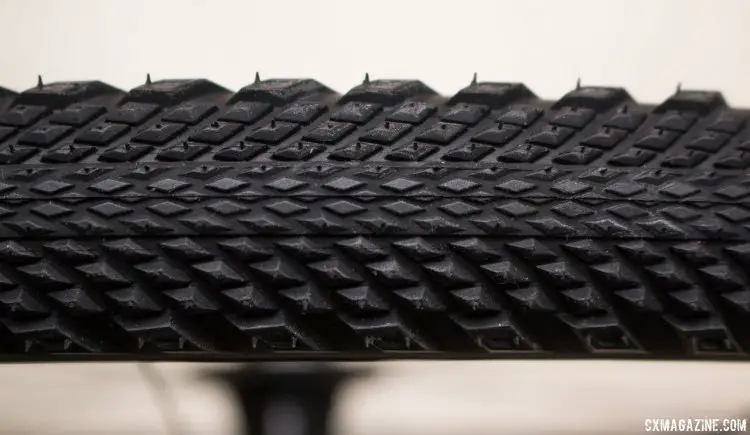
Specialized Trigger 38c tire, a tread that rides well on hard-packed dirt and pavement. © Cyclocross Magazine
The next biggest selling point is the flat-protection, which sensibly rivals the company’s All Condition Armadillo Elite, although they have vastly different tread patterns. The Trigger Pro 38c tire differs from the narrower 33c version in that it adds Specialized’s Endurant casing and flat protection, with is made up of a “Triple Wall” casing with Specialized’s BlackBelt belt underneath the tread (the Armadillo Elite goes even further with a bead-to-bead belt).
On all of our miles logged, we still haven’t gotten a flat tire, and haven’t noticed the telltale hissing and wet marks from sealant closing up punctures. It seems like the Endurant casing and BlackBelt are working.
The flat protection benefit comes at a cost, however. At 494g, the Trigger is a heavy tire. To put that number in perspective, Specialized’s 1.8” (46c) S-Works Renegade, a wider mountain 29er bike tire, is nearly 70g lighter with more knobs and a supple casing (be sure to stay tuned for our in-review look at the Renegade). Still, the Endurant casing of the Trigger is a good insurance for those “lose yourself” adventure rides, especially if you think you might be hitting some sharper rocks that fall outside the definition of any satirical gravel grinder regulations.
Trigger Pro 38c – Don’t Call It a Monster
We have been shouting for years that companies need to serve the non-UCI racing tire buying market (or more succinctly, the tire buying market). UCI and USAC Nationals tire width regulations are irrelevant to 99% of racers, and most tube and tubeless racers would be well served by high volume tires that offer more compliance over bumpy terrain and more resistance to pinch flats (or burps).
When we first saw the Specialized Trigger in the 38c width, we thought our prayers were answered, at least for dry, hardpack days or gravel grinders. Would the Trigger Pro 38c surpass the WTB Cross Boss 35c (reviewed here) as our new high volume favorite? A Monster Cross must have?
It was time to take out the calipers:
Our actual measured width of the 700x38c tire actually came out to less than 35mm on a 17.5mm wide (internal) rim. That’s basically the same width as the WTB Cross Boss 35c, which measured to be 35mm on a 18mm wide (internal) rim. (For reference, an older Mavic Open Pro rim has an internal width of around 14mm.)
It’s worth putting this into perspective though, as most cyclocross clinchers, with perhaps the exception of Clement’s clinchers and the Ritchey Shield 35c tire, end up measuring a few mm narrower than listed.
Even though the Trigger doesn’t live up to its 38c label, the tire still provides more volume than the average cyclocross tire, which is great for bigger riders, and anyone wanting more cushion for the pushin’.
Setting Up the Trigger Pro 38c 2Bliss
With Specialized’s 2Bliss bead, we expected the tubeless setup to be a breeze and reliable on most tubeless rims. The tires were pretty easy to mount on the rim, which is not always a great sign, but they inflated easily without a compressor, which is usually a good sign.
Our goal is always to find a tire/rim pairing that doesn’t burp at tire pressures we’d use when riding tubulars—that’s one of our reliability tests. We found the Trigger 38c worked reasonably well when paired with an NoTubes Iron Cross or American Classic Hurricane wheelset. Unfortunately, on Road Tubeless rims, the results weren’t as good, and after setting up the Trigger on our Easton Road Tubeless rims, we could easily finger burp the tire at 20-25 psi. That’s a no-go in our books, and we suspect the stiffer, Endurant casing plays a role in making it easier to burp the tire, as more side forces are transmitted to the tire’s bead. We can’t recommend these tires for Road Tubeless-certified rims (Shimano, Alex, Easton, Fulcrum, etc.), but suspect they’ll work better on mountain bike tubeless rims.
The Ride – Trigger Pro 38c:
Once we got the tire/rim combo sorted, it was time to ride it. Like it’s narrower 33c brother, the 38c Trigger shines on hard-packed dirt and pavement—it rolls quietly on the road, and has decent bite on dirt. The tire is also great on fine, uniform gravel regulated by April 1 Rules.
However, if the Trigger has one weakness in its intended use, it’s really loose gravel or dirt. We noticed this particularly on loose gravel climbs that required an out-of-the-saddle effort. The center tread has very little bite, and those small center knobs wear pretty quickly as you put down the miles. If you’re doing long, gradual seated climbs, the driving traction is usually sufficient, but if you find yourself on punchy, loose, steep climbs, you’ll grow tired of spinning without forward momentum.
Up front, the side knobs keep you upright in corners, but braking traction on loose surfaces is minimal. Riders with drifting skill will find the Trigger 38c to be a fine, fast front tire on dirt, but we’ll always prefer a bit more knob on a front tire for control.
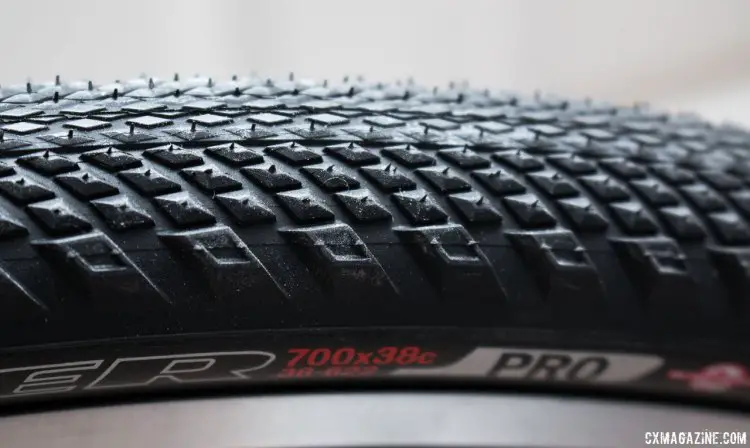
The side knobs of the Specialized Trigger have a fair bike for grassy cyclocross courses. © Cyclocross Magazine
If you ride at really low pressure (around 20 psi, depending on your weight), the side knobs may kick in and keep you rolling forward, but many riders won’t dare to come close to those pressures on the average mixed terrain course with pavement or the occasional big rock.
As far as cyclocross goes, the tires actually perform relatively well on grass, especially when the side knobs bite in the corners. The tires would likely work well on hard-packed, early season cyclocross courses or year ’round in drought-stricken states. The tread and volume can work well for cyclocross, but the stiff casing and flat protection might be overkill unless you’re racing in a glass or thorn-filled park.
Pull the Trigger: The Verdict
The Trigger 38c would act as a superb all-conditions commuter tire, highlighted by its resistance to flats and ability to take on a variety of terrain. Find yourself looking to diverge from the beaten path on the way home from work? Put this tire on your cyclocross bike and you’ve got yourself a reliable adventure bike. It warrants a 10 rating if you were needing a durable tire for commuting with a bit of dirt or gravel thrown in, or a broken pavement tire. The Endurant casing offers great flat protection, which should be of highest value to inner tube riders.
Doing a long dirt and gravel ride, need great flat tire protection and know you’ll stay seated for most of the event? The Trigger Pro 38c 2Bliss tire is worth considering, especially for cyclocross bike owners with limited tire clearance.
However, if you’re attracted to the Trigger Pro 38c tire thinking it’ll dramatically add volume and suppleness to your cyclocross bike? You’ll be disappointed. It’s not that big, and the flat-resistant casing is pretty stiff. Road Tubeless wheel owners will also be disappointed by burps at lower pressures.
We commend Specialized for answer the call for bigger tubeless tires, and hope they’ll make a 2Bliss 40c version of the more versatile Tracer tread next. And for the suppleness and gram-obsessed racers among us, we’d love to see models without the flat protection layers. We’ll put our faith in sealant, and promise not to cuss Endurant-equipped racers as they ride by while we’re fixing a flat, with our hands coated in liquid latex.
More info: specialized.com













